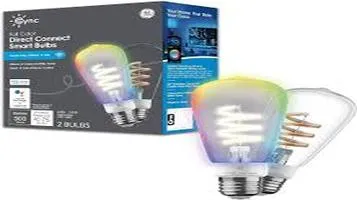Comprehensive Review of Recessed Ceiling Lights
Recessed ceiling lights, also known as can lights or downlights, are a sleek and modern lighting solution that is installed into the ceiling, providing a streamlined and unobtrusive look. These lights are designed to sit flush with the ceiling, making them ideal for spaces where a clean, minimalist aesthetic is desired. Recessed lights are versatile and can be used for general illumination, task lighting, or accent lighting, depending on the trim and bulb type used. They are commonly found in residential spaces such as kitchens, living rooms, and bathrooms, as well as in commercial settings. The lights typically consist of three main components: the housing, the trim, and the bulb, allowing for customization in terms of brightness, beam angle, and style to suit various needs and preferences.

Recessed ceiling lights, often referred to as can lights or downlights, have become a popular choice in modern interior design. They offer a sleek, unobtrusive lighting solution that can enhance the ambiance and functionality of various spaces. After installing these lights in different rooms of my home, I feel compelled to share my insights and evaluation of their performance, aesthetics, and overall impact.
Aesthetics and Design
One of the most striking features of recessed ceiling lights is their minimalistic design. Unlike traditional lighting fixtures, which can often dominate the visual field of a room, recessed lights are embedded into the ceiling, providing a clean and streamlined look. This makes them particularly suitable for contemporary and minimalist interiors, where less is often more.
The design flexibility of recessed lights is another significant advantage. Available in various sizes, shapes, and finishes, these lights can be tailored to complement any decor style. Whether you prefer a subtle matte finish or a more striking metallic look, there’s a recessed light to match your taste. The trim options, which can range from simple white to decorative and colorful, also allow for customization to suit specific design needs.
Functionality and Performance
Recessed ceiling lights are not just about aesthetics; they also excel in functionality. One of the key benefits is their ability to provide even and widespread illumination. This makes them ideal for general lighting purposes in large rooms, such as living rooms, kitchens, and offices. The absence of visible fixtures means that the light is distributed more uniformly across the space, reducing shadows and enhancing visibility.
For task lighting, recessed lights can be strategically placed to focus on specific areas. In the kitchen, for instance, positioning them over countertops and workspaces ensures that these areas are well-lit for cooking and food preparation. In the bathroom, recessed lights around the mirror can provide the bright, even light needed for grooming tasks.
Additionally, recessed lights are highly versatile in terms of their lighting effects. With options for dimmable bulbs, you can easily adjust the brightness to create the desired mood or ambiance. This feature is particularly useful in spaces like living rooms and bedrooms, where lighting needs can vary throughout the day.
Energy Efficiency
Energy efficiency is a crucial consideration in today’s environmentally conscious world, and recessed ceiling lights score well in this regard. Many modern recessed lights use LED bulbs, which are known for their low energy consumption and long lifespan. LED bulbs use significantly less electricity compared to traditional incandescent bulbs and produce less heat, making them safer and more cost-effective in the long run.
The ability to use dimmable LEDs further enhances energy savings. By reducing the light output when full brightness is not needed, you can lower electricity usage and extend the life of the bulbs. This not only benefits the environment but also reduces your utility bills.
Installation and Maintenance
While recessed ceiling lights offer numerous benefits, it’s important to consider the installation process. Installing these lights can be more complex than setting up traditional fixtures, particularly if your ceiling is not already prepped for them. It often involves cutting holes in the ceiling, running electrical wiring, and possibly installing additional support structures. For those not comfortable with DIY electrical work, hiring a professional electrician is advisable.
However, once installed, recessed lights are relatively low-maintenance. The bulbs are typically easy to replace, and because they are recessed into the ceiling, they are less prone to accumulating dust and debris compared to hanging fixtures. The use of LED bulbs also means fewer replacements, as they can last for many years.
Potential Drawbacks
Despite their many advantages, recessed ceiling lights are not without potential drawbacks. One concern is the initial cost. High-quality recessed lighting fixtures and professional installation can be expensive. However, this cost is often offset by the long-term energy savings and durability of the lights.
Another consideration is the potential for ceiling insulation issues. Improper installation can lead to gaps in insulation, which can affect the energy efficiency of your home. It’s essential to use insulation-compatible (IC) rated fixtures if the lights will be in contact with insulation materials.
Conclusion
In conclusion, recessed ceiling lights are a highly effective and aesthetically pleasing lighting solution that can enhance the look and functionality of any room. Their sleek design, versatility, and energy efficiency make them a popular choice for both residential and commercial spaces. While the installation process may be more involved compared to traditional lighting fixtures, the long-term benefits in terms of performance and maintenance make recessed ceiling lights a worthwhile investment. Whether you’re looking to achieve a modern, minimalist look or simply want a reliable and energy-efficient lighting option, recessed ceiling lights are an excellent choice.






